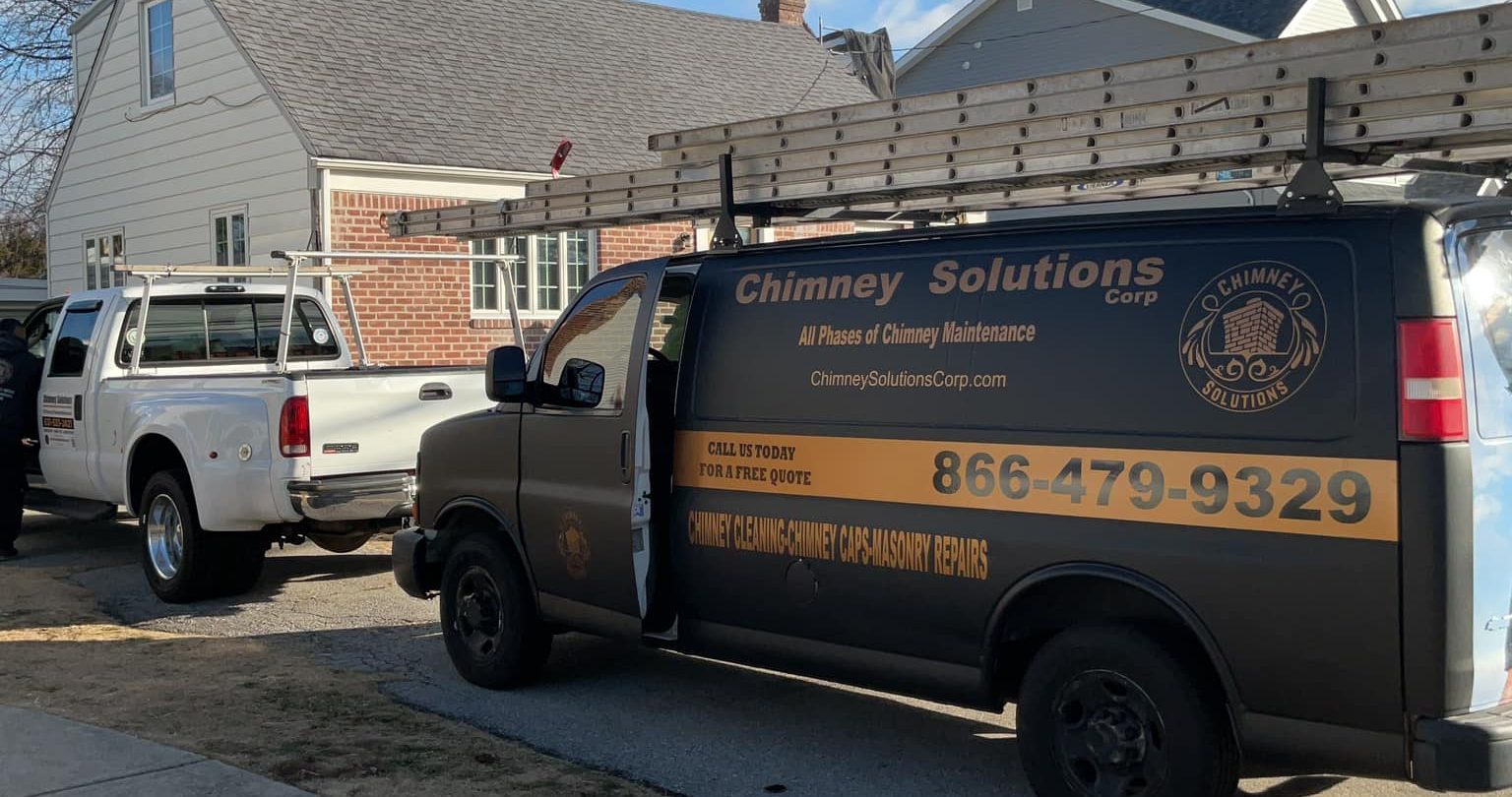EXCELLENTTrustindex verifies that the original source of the review is Google. Ignacio came and gave me a no nonsense estimate with pics, and the price was great. Alex and he did the work 2 days later, and were clean, neat and very professional. Definitely recommend 5 stars!Posted onTrustindex verifies that the original source of the review is Google. When you choose Chimney Solutions Corp., you are not just choosing a company that will do a phenomenal job with your chimney, but one that has exceptional customer service. This company truly values their customers and reputation as being leaders in their field. Chimney Solutions Corp. provides excellent value for their services and care deeply that they have exceeded every expectation from their customers in performing their services. They go above and beyond to ensure that their customers are satisfied with all aspects of their work and operate with great integrity as a business. I highly recommend them to anyone who is need of any chimney services.Posted onTrustindex verifies that the original source of the review is Google. They were fantastic to work with. After an initial hiccup, the scheduling was a breeze, that came on time, they took the time to do the job right, and then explained everything to me. Great company that I will work with again when I have more moneyPosted onTrustindex verifies that the original source of the review is Google. The company is simply the best, from the initial appointment for the estimate to showing up before their scheduled time to finish the job. All employees ( Carlos, Alex, Ricardo, Ignacio , Brandon, Manolo, Nicolas) showed superb customer service skills and professionalism, so welcoming ! I can’t say enough nice things about the company led by Carlos and Alex, please give them a chance and you will be nicely surprised with the outcome, highly recommended!Posted onTrustindex verifies that the original source of the review is Google. Chimney Solutions Corp did an excellent job repointing our chimney. The crew was professional, efficient, and left everything clean when the work was done. Their pricing was fair, and the customer service from start to finish was outstanding — clear communication, punctual, and genuinely helpful. We’re very pleased with the results and would absolutely recommend them to anyone in Greenwich looking for quality chimney work.Posted onTrustindex verifies that the original source of the review is Google. I had an excellent experience with this chimney company! They quickly identified that the previous company had done an incomplete job and guided me step by step through the entire process, explaining exactly what they were doing and why. They did a fantastic job installing my new liner, upgrading my equipment, and finishing my chimney with wire mesh and stucco. The team was professional, respectful, and extremely knowledgeable. I would highly recommend them to anyone and will definitely be using them again in the future!Posted onTrustindex verifies that the original source of the review is Google. Very helpful, informative , honest workmanship. This company really does Their work with professionalism. I am very pleased with their work and would recommend them to anyone who has chimney problemPosted onTrustindex verifies that the original source of the review is Google. What an absolute pleasure working with this company. From the initial phone call, to the job being completed, each person was competent, skilled and kept us informed every step of the way. The job was done in one day. The crew arrived early and worked the entire day (barely stopping for lunch) to finish. Each area they worked in was left cleaner than when they arrived. We now have a safe, waterproof and clean fireplace and flues. Thank you Alex, Carlos, Ignacio, Melanie and the entire hardworking crew at Chimney Solutions. We have already highly recommended your company. And we will definitely have you come back for regular cleanings and any future maintenance. If you’re on the fence about which chimney service to hire, do not hesitate to call Chimney Solutions. I guarantee that you will be impressed with the quality service.Posted onTrustindex verifies that the original source of the review is Google. Professional, thorough and easy to work withPosted onTrustindex verifies that the original source of the review is Google. Carlos and team did an amazing job with our chimney! He was thorough, explained everything, and answered all our questions . Carlos gave us a priority list and what we can do in the future, which was great and so helpful! Very responsive, got the work done in a timely manner, and great pricing too!Verified by TrustindexTrustindex verified badge is the Universal Symbol of Trust. Only the greatest companies can get the verified badge who has a review score above 4.5, based on customer reviews over the past 12 months. Read more
A blocked chimney can pose serious risks for commercial properties, from carbon monoxide buildup to potential fire hazards. When a chimney blockage occurs, it impedes proper airflow, disrupting efficient operation and compromising safety. Chimney Solutions Corp offers commercial chimney blockage removal services to prevent these potential hazards and maintain optimal performance for your business. This article covers how to address chimney blockages, common causes, and preventive measures to avoid expensive repairs.
What Happens If a Chimney Is Blocked?
A chimney blockage restricts the proper airflow needed to safely expel harmful gases, such as carbon monoxide. This can lead to carbon monoxide poisoning or a dangerous buildup of acidic gases, which can damage the chimney structure over time. If left untreated, creosote accumulation and tar buildup may result in a chimney fire. Moreover, the accumulation of soot or materials from animals like bird nests can significantly reduce heating performance, causing your system to work harder and leading to increased energy costs.
Signs of a Blocked Chimney
Recognizing a chimney blockage early can help prevent serious issues. Common signs include:
- Smoke or fumes entering the room: This typically happens when there’s a blockage preventing proper venting.
- Unpleasant odors: Blockages can cause trapped gases to escape into the building, resulting in strange, musty smells.
- Reduced heating efficiency: If you notice your heating system isn’t working as effectively, it may be due to a chimney blockage.
- Visible debris or nests: If you see materials from animals like bird nests or nesting materials at the chimney’s opening, you likely have a blockage.
What Is a Commercial Chimney Rebuild?
A commercial chimney rebuild involves restoring a chimney that has sustained extensive damage, making it unsafe or inefficient. The process often includes replacing damaged mortar joints, chimney liners, chimney crown repair, and other critical components. Rebuilding your chimney ensures that your commercial chimney systems are safe and efficient for long-term use.
This process is typically required for chimneys in commercial settings or industrial buildings, where regular chimney cleaning, chimney inspections, and chimney maintenance services may not be sufficient to address more severe issues. A rebuild provides lasting solutions to common chimney issues such as water leakage, corrosion, or structural instability.
Chimney rebuilds involve:
- Removing damaged parts: Including chimney caps, chimney liners, and compromised brick structures.
- Replacing and restoring components: This may involve installing stainless steel chimney liners, chimney flashing, and chimney crown repairs to protect your chimney from water damage and extend its lifespan.
- Reinforcing the structure: Ensuring the chimney is safe and stable for continued use in commercial offices, restaurants, and industrial properties.
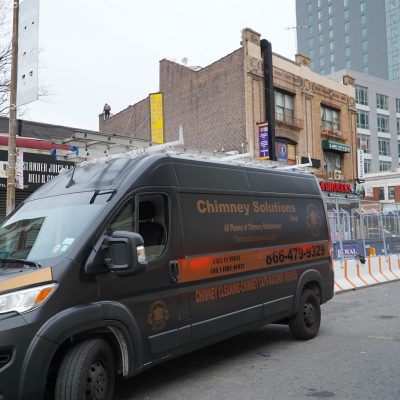
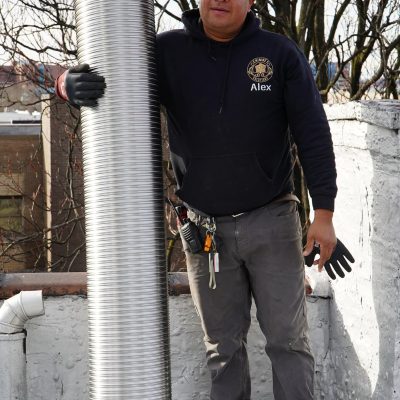
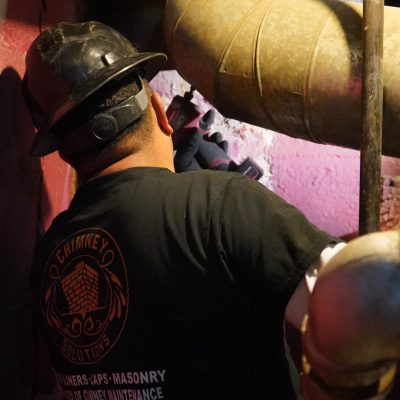
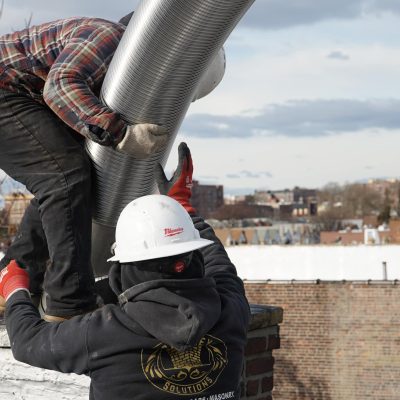
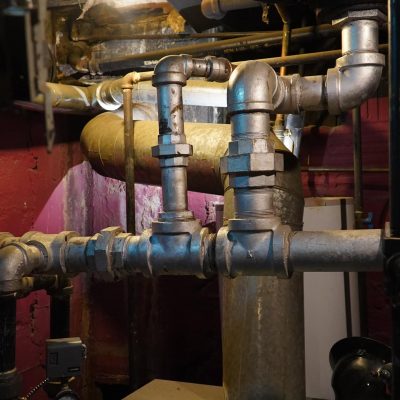
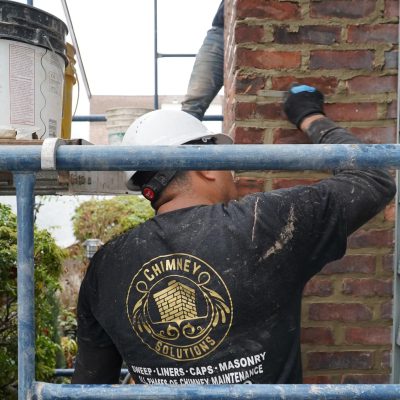
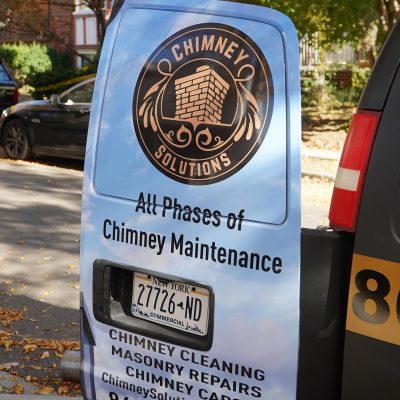
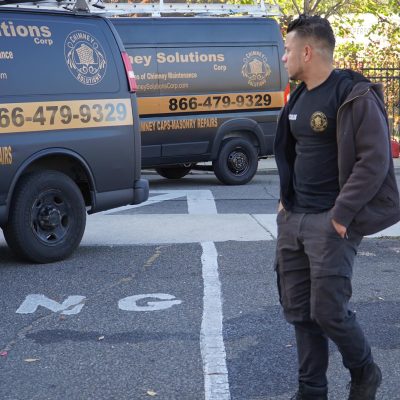
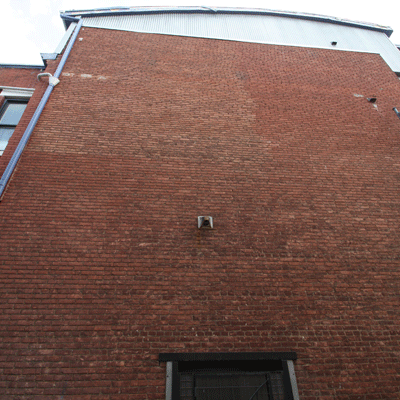
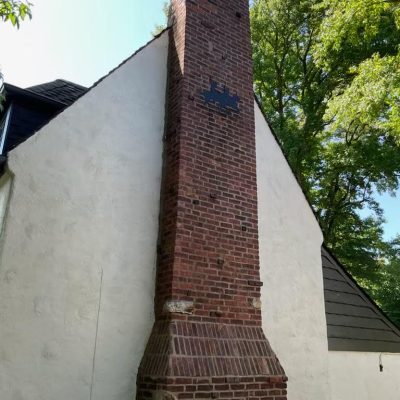
How Do You Unblock a Clogged Chimney?
Clearing a clogged chimney is a task best handled by chimney blockage removal experts. Here’s a professional approach:
- Inspection: A detailed inspection is conducted to assess the type of blockage, such as creosote buildup, animal nests, or tar blockages.
- Clearing the Obstruction: Using specialized tools like high-powered chimney brushes and mechanical devices, professionals remove the obstruction.
- Chimney Brushing and Flue Cleaning: Chimney brushing and flue cleaning ensure there is no buildup of soot or creosote, restoring the efficient airflow.
- Final Inspection: After the blockage is cleared, a final chimney blockage inspection is done to confirm the chimney’s safety and functionality.
How to Prevent Chimney Blockages
Regular maintenance is crucial to preventing chimney blockages. Here’s how you can avoid the inconvenience and safety risks of blockages:
- Regular Inspections: Schedule annual chimney inspections to detect potential obstructions early.
- Chimney Cap Services: Installing a chimney cap prevents animal nests, debris, and rainwater from entering the chimney, reducing the risk of blockages.
- Chimney Sweeping Services: Regular chimney sweeping helps clear accumulation of soot and creosote, which are common culprits behind blockages.
- Proactive Approach: Implement a proactive maintenance schedule to address any potential issues before they escalate into major structural damage.
Why Is Regular Maintenance Important for Commercial Chimneys?
For commercial chimneys, routine maintenance ensures safe operation and compliance with safety codes. Without regular care, chimney blockages can lead to costly repairs, increased carbon monoxide risks, and reduced heating performance. Keeping your chimney system clear is critical for uninterrupted functionality in business operations, whether for a restaurant with a commercial kitchen, a hotel, or a factory with industrial boilers.
How Do Commercial Chimney Services Differ from Residential Services?
Commercial chimneys have unique requirements compared to residential systems due to their size and frequent use. Here’s how commercial chimney services differ:
- Larger Systems: Commercial chimneys often handle higher volumes of smoke and heat, requiring more frequent inspections and specialized equipment.
- Complex Regulations: Commercial properties must adhere to stricter safety standards and building codes, ensuring their chimneys are safe and compliant.
- Expert Technicians: Chimney Solutions Corp employs skilled professionals who use advanced techniques to clear chimney blockages safely in industrial and commercial settings.
What Are the Common Issues That Require Chimney Repairs in Commercial Buildings?
Several issues can lead to chimney damage in commercial buildings, including:
- Creosote and tar buildup: Over time, creosote accumulates in the chimney, blocking airflow and creating a fire risk.
- Animal nests: Animal nests, particularly from birds or rodents, are a common cause of chimney blockages in both residential and commercial chimneys.
- Structural damage: Over time, chimney systems can suffer from wear and tear, leading to cracks or other damage that restricts airflow.
Conclusion
A chimney blockage can significantly affect the safe operation and optimal performance of your commercial heating system. By scheduling regular chimney inspections, cleaning, and timely chimney blockage removal, you can ensure that your commercial property stays safe and operational. Whether you’re dealing with a clogged chimney, animal nests, or soot buildup, Chimney Solutions Corp offers comprehensive solutions for all your commercial chimney needs.
For peace of mind and optimal airflow, trust the chimney blockage removal technicians at Chimney Solutions Corp. Contact us today for a comprehensive chimney blockage inspection and efficient chimney blockage clearing services.
Frequently Asked Questions
- How do you unblock a clogged chimney?
Professional chimney blockage removal experts use specialized tools like high-powered chimney brushes and mechanical devices to clear clogged chimneys. - How to open a blocked chimney?
Chimney blockage clearing services involve the use of advanced equipment to safely remove blockages and restore proper airflow. - How do you unclog a chimney?
Clearing a chimney blockage requires professional inspection to identify the type of blockage, followed by the removal of soot, tar, or animal nests. - What happens if a chimney is blocked?
A blocked chimney can cause carbon monoxide buildup, poor ventilation, and increased fire risks, threatening both the safety and optimal performance of your heating system.
